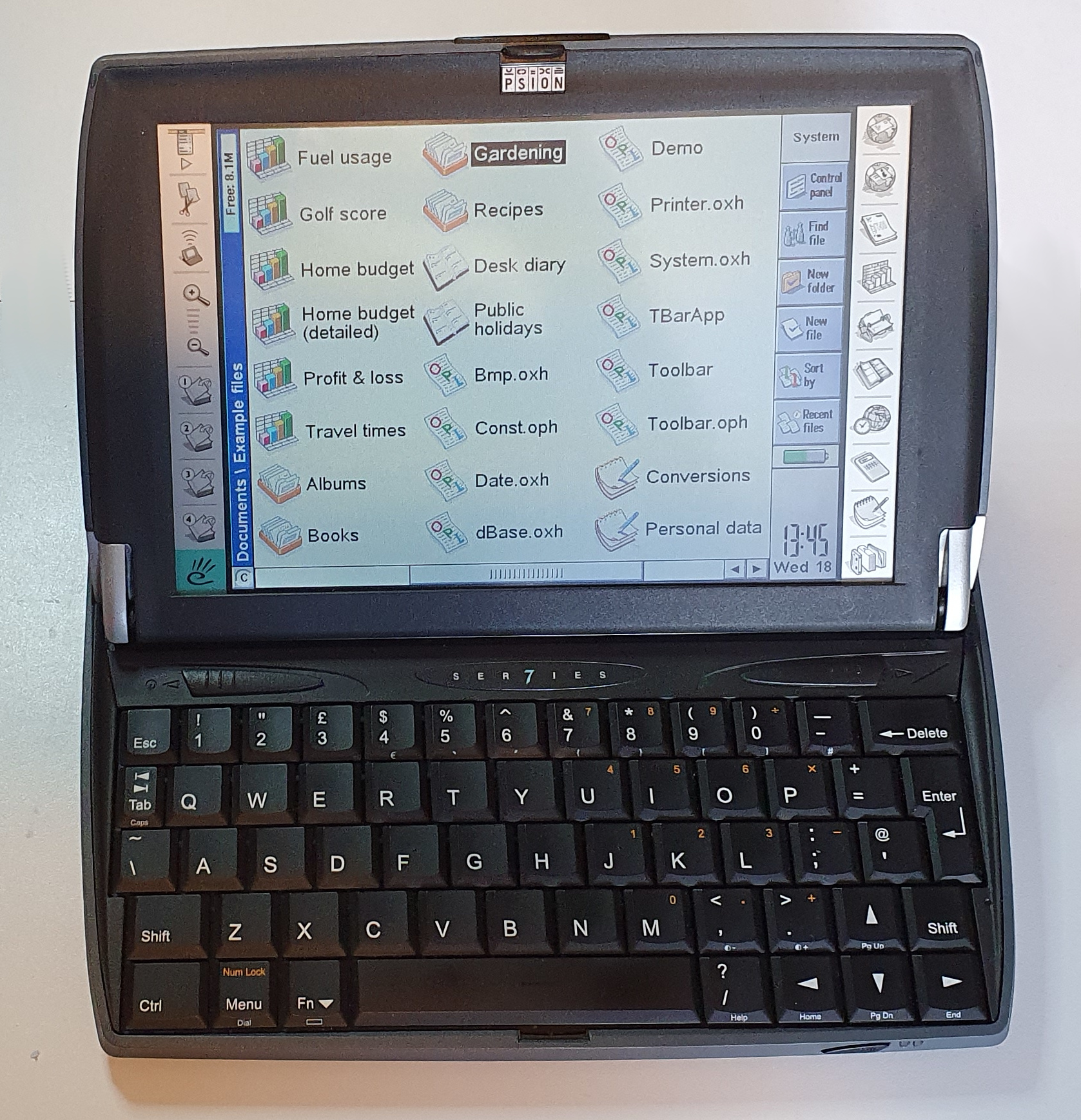Psion Series 7
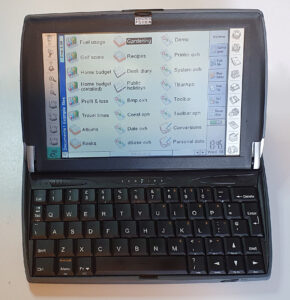
The Series 7 from Psion was released in 2000, after their Series 5 and, unlike their other ‘organiser’ and ‘series’ machines was not really small enough to be called a ‘handheld’. It was more of a mini-laptop or notebook, being about a centimetre bigger all round than a sheet of A5 paper and about half a centimetre thicker than a Series 5.
The Series 7 was a consumer version of the Netbook. That machine is essentially the same with more memory and the software loaded into RAM making it faster, but it wasn’t really classed as a consumer device.
Hardware
Psion’s series 7 (and the Netbook) were the last of the ‘Series’ computers Psion made. The Netbook being the more sophisticated version, having more memory and software on disk rather than ROM. The Series 7 was intended to be a consumer version of the Netbook.
The screen on the Series 7 is the first and only of Psion’s consumer machines to feature a colour screen. Being colour, the screen took more power and therefore the machine had to have a more beefy battery, which took the form of a Lithium Ion pack. It sat behind the keyboard and took up the whole width of the machine. This, unlike the battery in the Revo, was a removable one which could be slid out of the side and easily replaced, should you need to do so. On the underside is a compartment for a CR2032 button cell to backup the memory if you ever have to do this.
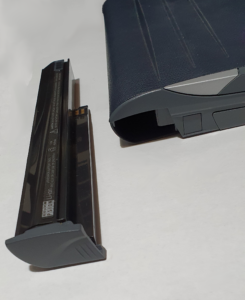
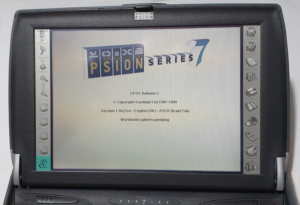
The screen on the Series 7 is a much larger and squarer one than on the other of Psion’s consumer machines, and accordingly the Series 7 is a larger machine. The resolution is the same as VGA (640 x 480 pixels) and it supports 256 colours.
The Series 7 keyboard is extremely similar to that of the Series 5, albeit about 5cm wider (but still about 5cm narrower than that of a standard desktop PC).
The layout is almost the same with a few extra keys, and, for some reason, the menu and Fn keys swapped.
Just above the keyboard are two sliding keys. The one to the right pushes out the stylus and the one to the left is the power key.
On the front of the case is another key. This is to cancel alarms without having to open the lid. There are also a couple of lights on the front that indicate the charge state of the batter when it’s plugged in.
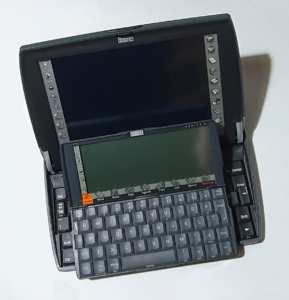
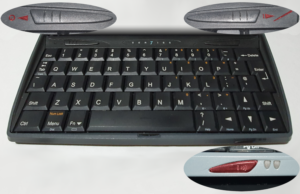
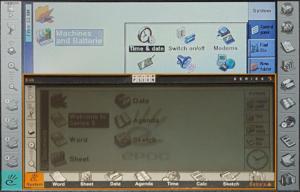
Like the Series 5 It’s a touch screen, but unlike the Series 5 the fixed touch buttons are to both sides of the screen. Most of the applications are to the right, with some software definable ones to the left. The Menu, Clipboard and zoom buttons are exactly where you would find them on the Series 5 (to the top left) and the system button is to the bottom left (again just how it is on the Series 5).
In order to expand storage on the Series 7, just like on the 5 and 5mx, you can use Compact Flash cards. These appear as drive ‘D’. The cards are inserted into a tray which slides into the body of the machine.
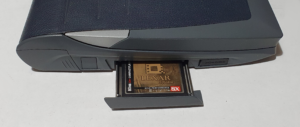
Also on the left side there is the serial port, protected from fluff and dust by a rubber cover. The cable required is the same as that used by the Series 3c, 3mx, Siena, 5 and 5mx. On the Series 7, the RS-232 goes up to 115200 baud.
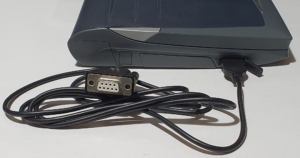
Unlike the 5/5mx machines, you can also use PCMCIA memory cards. A CF card with an adaptor will work. To my knowledge, the only other cards that work with the operating system are modems (Psion gold cards are known to work).
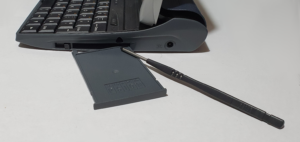
As well as the PCMCIA slot, the right hand side also contains the holster for the stylus, and the barrel connector for the external charger.

To the rear, the only feature you will see is the IrDA port.
Summary
- CPU: StrongArm SA-1100 running at 132.71MHz.
- RAM: 16MB.
- ROM: 16MB.
- Display: 256 colour VGA (640×480 pixels).
- Touch screen with fixed touch buttons.
- Almost-full sized qwerty keyboard.
- External alarm alart LED and snooze button.
- Audio: 12-bit sounds and mic.
- Compact Flash II drawer (not a slot).
- PCMCIA Slot.
- RS-232 serial port.
- IrDA.
- Power: 1500mA Li-Ion battery, CR2032 backup. Charged by 15V external jack.
- Docking connector on bottom.
Software
Most of the software on the Series 7 is the same as that on the 5mx (apart from adjustments for the screen differences). I don’t have a 5mx, but I do have an Ericsson MC218 which I believe has very similar software to the 5mx.
The Series 7 is a much closer evolution to the Series 5’s than the 5’s were to the 3’s. The Series 3’s use a different class of processor – the NEC V30, but the 5’s and 7 run on Arm. The 3’s do not have a touch screen but the 5’s and 7 do. The OS itself is a definite progression, but there are notable differences, especially in the system screen. This is evident from the Machine tab on the Machine Information dialog (from the Information menu). The 5 is at version 1.01 whereas the MC218 is at 1.05(259) and the 7 is at 1.05(254). These version numbers might change during the product lifetimes, but these are the ones I have.
The fixed buttons around the screen, as mentioned above, are different but afford similar functionality. The menu, system (or desktop) and extras buttons are all still in the same places and perform exactly the same functions. The clipboard, IR and zoom buttons are still at the top left and perform the same as well. The program buttons are now on the right, with four user definable ones filling in the extra height on the left.
When it comes to the system screen, the Series 7 and the Series 5/Ericsson MC218 act almost the same. The obvious difference would be the larger colour screen on the Series 7, of course. That larger screen affords space for more buttons on the toolbar that appears by default on the right hand side.
The other built-in applications all behave in pretty much the same manner as they do on the MC218 with the same minor changes. The biggest change you’ll notice is the use of colour instead of grey scale (and the additional screen height, of course).
Summary
- OS: EPOC version 5 (software version 1.05(254))
- Word.
- Spell.
- Sheet.
- Sketch.
- Agenda.
- Database.
- Contacts.
- Jotter.
- Record.
- Calculator.
- Time.
- OPL.
- Communications.
- Email.
- Web.
- Printer support.
Summary
The Series 7 was the last of Psion’s consumer devices, the only one with a colour screen and only their second attempt at a laptop/notebook format machine (the other being the MC200/MC400/MC600 range).
The keyboard is very nice to type on, the slightly larger size than the Series 5 seems to make little difference as that was also a nice keyboard. The screen makes the machine so much nicer to use, especially being illuminated and, of course, much larger. The software on the Series 5 made good use of the real estate it had, but that extra height makes a difference.
Most of the built-in software is very good, I even used the spreadsheet to track battery charging of my vintage collection and found that it has most features I would want. I wouldn’t use the email or web programs though, partly because the connection to the internet is woefully inadequate, but also because internet encryption has moved on way past what the built-in software could support. Additional Series 7-specific software seems a bit thin on the ground, although there is some compatibility with the Series 5. I have had mixed results with that though, but I haven’t really tried very hard.
When moving from the Series 5, one thing I find catches me out a lot is the stylus eject. The Series 5 was a push-click release whereas the Series 7 has a slide button to release it. I think that catches me out out mostly because of how similar the two machines are to use.
I can’t comment much as to the Series 7’s carry-ability as I have never used it as a daily driver. I did use the Series 3a and the 5 as daily drivers (in turn) when they were still current and could carry them in a large pocket. There’s no chance I could fit a Series 7 in a pocket, but then it’s more like a laptop, and you wouldn’t expect to carry that in your pocket. It’s smaller than every modern laptop I’ve ever seen, but thicker, and maybe around the same weight. I do, however, have some vintage laptops that are smaller, like the OQO Model 01+ and PD1000 (which are both proper Windows machines) Husky Hunter (CP/M), HP Jornada 820 (Windowc CE) and others.
Repairs etc.
I had nothing needing to be done to the hardware of my Series 7. Even the battery still holds a reasonable charge. One thing I did discover was to do with the touch screen. Sometimes it can get into a state where it needs re-calibration. Don’t do that straight away. First give a good press down on the Series 7 logo badge above the keyboard. This might fix things for you. According to the internet this is due to the touchscreen ribbon coming a bit loose and this helps improve that.
Software-wise I tried a few programs and fond that some work OK and some cause issues. The problems I’ve seen include:
- Application shows nothing but a white screen. When this happens there often seems no was to kill the application, short of sticking a bent paperclip in the reset button (which is hidden under the backup battery cover). I tried calling up the task list from the system screen and using ctrl-E then shift-ctrl-E on the broken task to no avail.
- Application refuses to uninstall. This was an oddity. According to information I found on the internet: When installing a .sis file, a .sis file gets stored in the System\install folder in order to remove what it installed. This can be corrupt, and if so you can’t run the Add/remove control panel for anything. You need to remove the offending file.
To-Do
- Try some Series 5 software.

